Peugeot Rifter GT Line BlueHDi 100
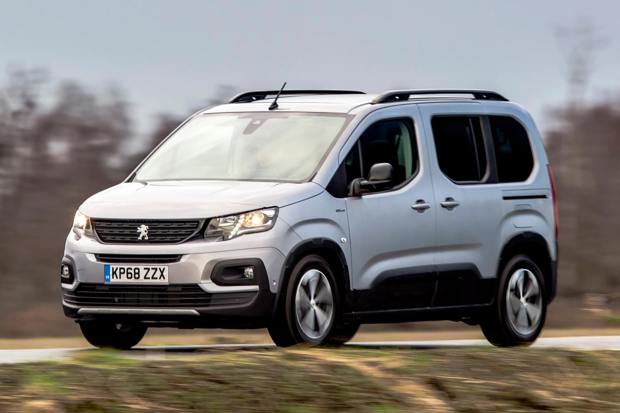
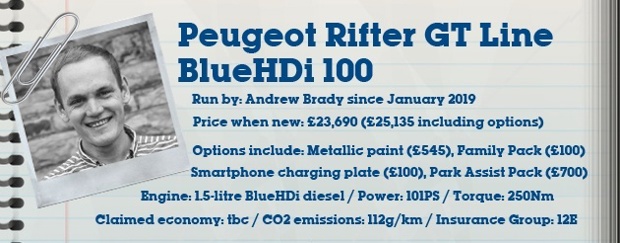
- We're not stupid - we're running a Rifter
- Should I have got a longer Rifter?
- The 'loser cruiser' gets an upgrade
- In praise of the sliding door
- Does the Rifter pass the M25 test?
- Why the Rifter is a 'cracking' car
- What are MagicWash windscreen wipers?
- Where are all the cup holders?
- The Peugeot Rifter is very slow
- Why the Rifter offers tremendous value for money
- Faulty sensor sidelines the Rifter
We're not stupid - we're running a Rifter
HJ made some bold claims about the Rifter when he first drove it last year. Now Andrew's finding out how true they are...
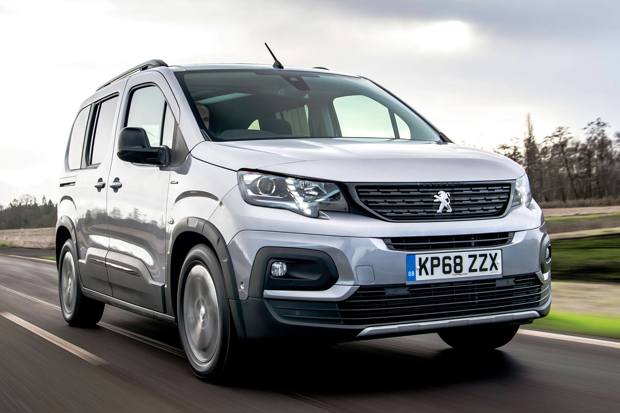
Date: 4 February 2019 | Current mileage: 103 miles | Claimed fuel economy: tbc | Actual fuel economy: 45.0mpg
“The Peugeot Rifter is the kind of car that stupid British people won’t buy,” said HJ, after driving the Rifter for the first time last year. Strong words.
It’s essentially a van with windows and seats. A practical people carrier that puts functionality over everything else - including performance and trendy looks. After having a blast running the Volkswagen e-Golf for six months, I was due to take on a Nissan Leaf to continue my mission to prove that electric vehicles can be used every day.
Classics editor Keith took a shine to the Leaf and, the long and short of it is, I’m now spending six months proving that I’m not stupid by driving a Rifter. In fairness, as a contributor to Honest John Kit, I’ve got a lot of stuff to transport in the coming months - bikes and tents and the like - and what better car than a Leisure Activity Vehicle (LAV - Peugeot’s words) for doing that?
My Rifter is a GT Line model so comes with a panoramic roof including fancy lighting, as well as an eight-inch multimedia display with 3D navigation and Apple CarPlay/Android Auto. Options include metallic paint (£575), the Park Assist pack including a reversing camera with overhead view (£700) and a smartphone wireless charging plate (£100). There’s also the £100 Family Pack with a small mirror located below the normal rear-view mirror (great for keeping an eye on kids in the back) and blinds on the rear side windows.
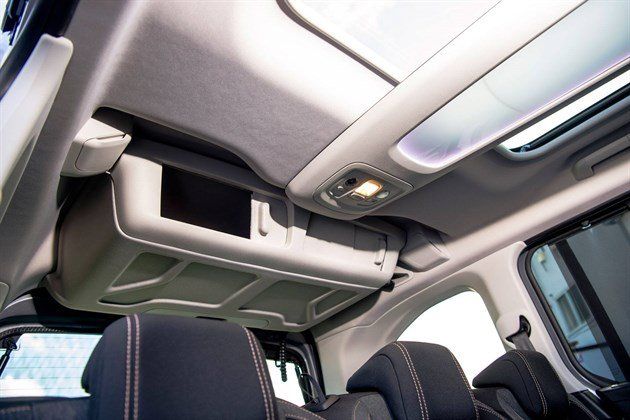
The engine is a 1.5-litre BlueHDi diesel with 101PS and a five-speed manual gearbox. It emits 113g/km CO2, while Peugeot is yet to confirm fuel economy figures. There is a more powerful 129PS version available with a six-speed manual gearbox - it’ll be interesting to see if, during my time with the Rifter, I find myself wishing I’d gone for the more powerful engine.
Since taking delivery, the Rifter's been put straight to use. Aside from my 20-mile cross-country commute, I spend a lot of time driving on the crowded motorways of the South East. And for that, the Rifter’s a surprisingly pleasant thing.
I enjoy its high-up seating position and the fact that it’s not particularly powerful is, in a way, a positive. You find yourself cruising happily at around 65mph and not bothering hustling with the premium executive cars in the outside lane.
Will my impressions still be positive in six months time? And just how well will the Rifter cope with lugging bulky loads? Watch this space...
Should I have got a longer Rifter?
Andrew's Rifter is marginally too small for a Billy Bookcase...
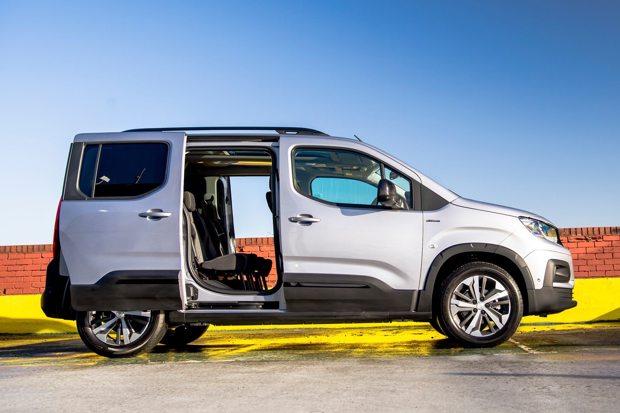
Date: 18 February 2019 | Current mileage: 875 miles | Claimed fuel economy: tbc | Actual fuel economy: 47.0mpg
Like many people who buy a Peugeot Rifter, the main reason I opted to run one for six months is because I want to carry stuff. And I've been discovering that it's very good at that. Ikea runs, tip trips, you name it... the Rifter will do it. I have had one nagging frustration, though. Should I have got a longer Rifter?
The standard Rifter is about 4.4 metres long. On a recent trip to Ikea, I nonchalantly piled a few Billy Bookcases onto my trolley, confident in the knowledge that I could drop the Rifter's rear seats and pretend it was a van.
Once I got to the car park, I had that embarrasing realisation that they wouldn't fit. My van-based people carrier wasn't big enough for a Billy Bookcase. There wasn't much in it - but even at an angle, it still stuck out too much to close the boot.
Fortunately I was travelling on my own, so I managed to fold the front passenger forward as much as I could (it's a shame it doesn't fold flat entirely) and I just about managed to squeeze the Billy Bookcases in. But it wasn't as easy as I'd expected it to be.
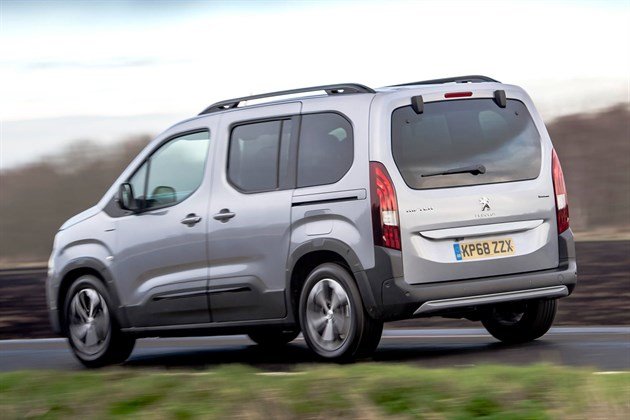
It's not just Billy Bookcases, either. I've also had a mountain bike in the back, and that can only fit if you point the front wheel towards the roof. That's fine, but doesn't help keep the back of the front seats clean.
So, back to the original question... should I have got a longer Rifter? Well, you certainly can get a longer Rifter. As well as the standard bodystyle, there's a long version. This has an extra 35cm in length, which doesn't sound a lot but could make all the difference when loading it with furniture or planning a mountain biking trip.
There's also the choice of five- or seven-seats. Mine's the humble five-seater, which had me scratching my head at first. What's the point of driving a van-based car, with all the disadvantages that brings, and only being able to carry the same amount of passengers as a Ford Focus?
We'll come onto that, but if you opt for seven seats in the standard Rifter, you don't have much luggage space once it's loaded with passengers. Opt for a long wheelbase Rifter and you do actually get a bit of a boot as well as seating for seven. In that case, it's definitely worth opting for a longer Rifter.
The 'loser cruiser' gets an upgrade
The Peugeot Rifter is cool, insists Andy. He's even attached a mountain bike to the roof to prove this.

Date: 4 March 2019 | Current mileage: 1335 miles | Claimed fuel economy: tbc | Actual fuel economy: 49.3mpg
The Rifter has rather cruelly been dubbed the 'loser cruiser' by some of my friends. While I love its relaxed nature, versatility and even how it looks, it doesn't appeal to everyone. And while Peugeot's attempting to market it as a Leisure Activity Vehicle, there's no denying that it's the kind of car that appeals to those of an older demographic.
In attempt to tell the world that I'm a recreational Rifter driver (and not wanting to be outdone by David's roof box), I've fitted a roof rack to the Rifter. It's the sort that'll carry bikes, meaning I can sling my mountain bike on the roof and head to the hills without compromising luggage space inside.
It's not just because I've been taken in by Peugeot's marketing material. I'm chief bike reviewer over on Honest John Kit (yes, I've given myself that job title), and that means carrying bikes around. So being able to carry bikes on the roof of the Rifter is genuinely useful.
Except, in all my excitement, there's one thing I overlooked. The Rifter's roof is quite a long way off the ground. I'm not very tall and bikes can be quite awkward (and heavy) things to lift.

Rifter, without roof bars.
I'm not quite sure how my first attempt to attach a bike to my new roof rack didn't end with one falling through the Rifter's panoramic sunroof. It's easier with two people, but you still need to open the sliding doors and cling awkwardly to the side of the car and you attempt to lift up a bike.
If I bought the Rifter solely to carry bikes, I'd probably be calling on Peugeot to offer a ladder as part of its accessories list. The standard model is not really long enough to carry one inside (even with the rear seats dropped), and it'd be far easier to attach bikes to a roof rack fitted to a much lower car.
An estate like the Peugeot 508 SW would probably be better suited to this purpose, and is also less likely to earn a nasty nickname like the loser cruiser - not to mention be nicer to drive, have a better interior... you get the idea.
It's not all bad news, though. The Rifter's fuel economy is getting more impressive the more I drive it, now returning close to 50mpg on a run - even with the roof bars doing their best to interfere with its aerodynamics.
In praise of the sliding door
Remember the Peugeot 1007? Yeah, us too...
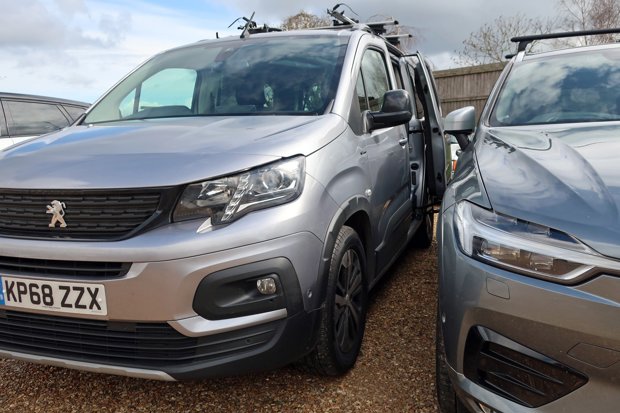
Date: 18 March 2019 | Current mileage: 1403 miles | Claimed fuel economy: tbc | Actual fuel economy: 49.8mpg
Peugeot revealed the bizarre Sesame concept car at the 2002 Paris Motor Show. It was a small, upright car with sliding doors - intended to make getting in and out easier in car parks, as well as not inconveniencing traffic as much when parked on the side of a busy road. You could even drive it around with the doors open, should you wish, pretending you were Postman Pat.
Foolishly, Peugeot gauged reaction to the Sesame as positive and believed the market research that suggested people actually wanted a small car with sliding doors. So it put it into production, three years later, as the 1007.
The Peugeot 1007 sold in small numbers and the company resorted to offering huge discounts to shift them before it was axed after just three years on sale. Since then, no one's offered a small car with sliding doors.
Sliding doors do make sense on vans, though, and on people carriers where easy access is more important than aesthetics. And yes, my Peugeot Rifter does indeed have sliding doors. Just for the rear, unfortunately (and unlike the 1007), but sliding doors nonetheless.
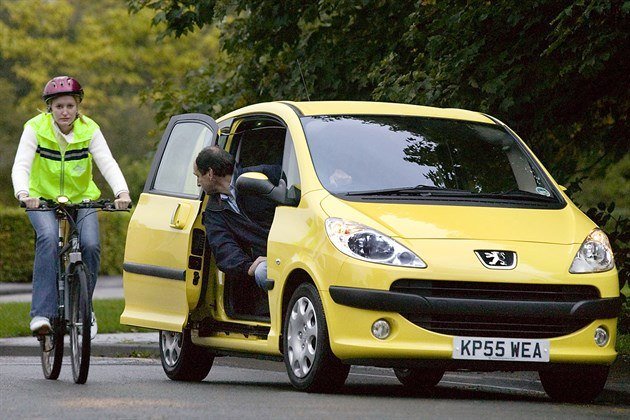
This is what car buyers in 2019 are missing out on.
I really like them. I regularly park in tight multi-storey car parks, where opening wide-opening doors to access the rear seats can be troublesome at best; damaging at worst. With the Rifter's doors, opening them is easy and provides excellent access to the back. They also provide a useful place to stand while accessing the roof rack, without getting in the way like a conventional door would.
Should I have opted for the seven-seat model, I suspect sliding doors would also aid entry into the rear-most seats. Quite often, accessing these in a seven-seater can be tricky. But with the Rifter's wide-opening doors, scrambling into the back ought to be a piece of cake.
Unlike the Peugeot 1007, the Rifter's sliding doors are manually-operated rather than electric. That means they're quicker to open and shut and, hopefully, less likely than the 1007's to go wrong a few years down the line. Of course, the disadvantage of this is that they are quite heavy - my driver's side door seems slightly sticky, although I'm hoping this will improve over time.
While I'm on the subject, it would be remiss of me not to take the opportunity to point out that you can now pick up a Peugeot 1007 in the classifieds for less than £1500. It's got future classic written all over it, right?
Does the Rifter pass the M25 test?
Irritating speed camera alerts and a buggy infotainment system are spoiling our time with the Peugeot Rifter.
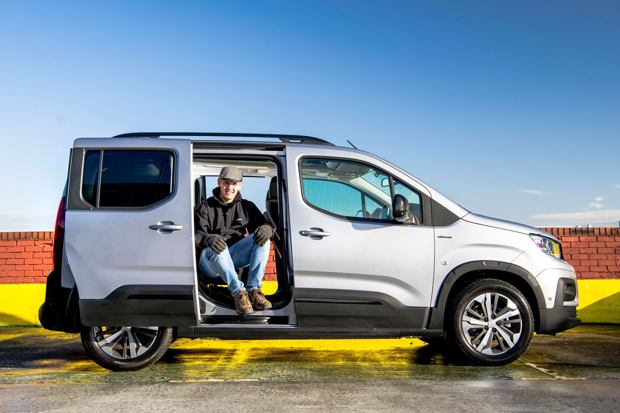
Date: 1 April 2019 | Current mileage: 1782 miles | Claimed fuel economy: tbc | Actual fuel economy: 50.1mpg
While loading the Peugeot Rifter with mountain bikes and heading for the hills is a fun way of living up to all the lifestyle cliches, the unfortunate truth is that the Rifter and I spend far more time together on the M25.
London’s orbital motorway is a grim place to be no matter what car you’re in. Unfortunately, I have to drive it fairly regularly, and it does reveal which cars are good at whiling away those frustrating journeys, and which cars just add to the annoyance.
I’m pleased to say that the Rifter doesn’t score badly on the M25 test - it’s a relaxing companion with comfortable seats and a good view of the road ahead. There are some issues, though.
My Rifter has a speed camera alert system as part of its Connected 3D Navigation, standard on the GT Line model. When you’re approaching a fixed camera, it’ll make a bong to remind you that it’s there so you don’t get slapped with a fine and points on your licence.
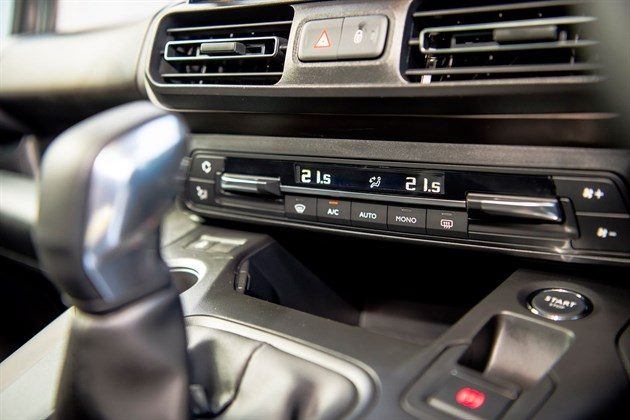
Nope, definitely can't see a way of turning the speed camera alerts off here.
Without getting into the arguments for and against such a system, the opportunity to speed around the M25 in the Rifter is rarely there. It’s usually too busy, for a start, and when it is clear, the Rifter isn’t exactly the sort of car that’s happy eating up the miles at 90mph.
This doesn’t stop it beeping, though. At every speed camera. Including those in average speed camera sections, where there can be cameras every hundred yards are so. You can imagine the frustration, cruising along considerably below the speed limit and having the radio interrupted every 20 seconds by a ‘bong’ noise.
Despite consulting the owner’s manual, I’ve not sussed out how to turn it off. I have, however, managed to increase its volume - meaning the bong is now extremely loud and extremely annoying. From what I can see, the only way of changing the volume is by hitting the volume buttons on the steering wheel when it goes off, which it does only briefly, meaning you have to catch it quickly.
It’s not just the bongs that are annoying me in the Rifter. Peugeot infotainment systems aren’t the best, but that’s something I get around by connecting my phone and using Android Auto (a nice-to-have standard feature). Unfortunately, it’s a little buggy in the Rifter. It’ll occasionally drop out, and if I try to make a handsfree call it usually only lasts for a short period of time before the person I’m calling can no longer hear me. While I find that Android Auto has its issues no matter which car you’re in, it’s definitely worse in the Peugeot.
Why the Rifter is a 'cracking' car
Andy looks into the meaning behind the name 'Rifter'. And thankfully it's nothing to do with plumbers...
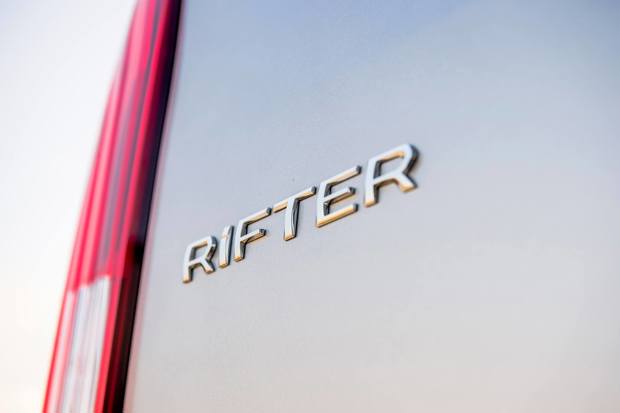
Date: 15 April 2019 | Current mileage: 1937 miles | Claimed fuel economy: tbc | Actual fuel economy: 52.2mpg
My colleague Georgia recently looked into the meaning behind the name of the Hyundai Kona, her current test car. In short, she found it translated into female genitalia in Portuguese.
But I've also heard sniggerings around the Rifter name. It's not a word I'm really familiar with, although the temptation to stick a 'd' to the left of the badge and pretend I'm Ken Block is there.
According to one online dictionary, rifter means 'a crack in sea ice'. That sounds an awful lot like a rift to me, but presumably there are deep marketing reasons why Peugeot hasn't called its van-based people carrier the Peugeot Rift.
Embarrasingly, a slightly less formal online dictionary identifies a rifter as "a butt crack, usually visible when bent over with loose pants." It goes on to give the example: "The plumber bent over and showed us his rifter."

Ken Block doing what Ken Block does. He should drive a (d)Rifter.
It's easy to see how the word for a crack in sea ice became a slang word for, well, a plumber's crack. It's less clear why Peugeot decided to name a car after it, but it's arguably better than the model the Rifter replaced - the Peugeot Partner Tepee.
As Georgia explained in her update on the Kona, car manufacturers have form for getting it very wrong with car names. Getting a model name that works universally it's quite a challenge, in fact. One well-known example is the Mitsubishi Shogun, which was sold elsewhere as the Pajero. Unfortunately, Pajero is a slang word for a man who indulges in self-pleasure in Spanish-speaking countries - so it was badged the Montero there.
Alongside the Peugeot Rifter, I also have a Toyota MR2 in my garage. That had to be renamed in France as 'MR deux', French for MR2, sounds like 'merde'. That's French for, well, poo... don't say you don't learn stuff reading these updates on our cars.
All that said and done, I think the Rifter is a good name for the Rifter. Why? Well, it is a cracking car. Yes, I went there.
What are MagicWash windscreen wipers?
The Peugeot Rifter has a fancy way of cleaning its windscreen... but it could end up costly in the long run.

Date: 29 April 2019 | Current mileage: 2453 miles | Claimed fuel economy: tbc | Actual fuel economy: 51.3mpg
I really like how the Peugeot Rifter cleans its windscreen.
No, I'm not entering a new level of obsession with my Peugeot Rifter. It's fitted with what Peugeot calls 'MagicWash' wipers. Essentially, they have the washer nozzles integrated into the wipers. So, when you want to clean the windscreen, the washer fluid magically appears from the wipers, rather than squirting up haphazardly in the windscreen's direction.
It's a bit of a gimmick but it works well, and genuinely seems like quite a premium touch. Not only does Peugeot claim they do a better job of cleaning the windscreen, they also reduce the use of windscreen washer fluid as it's not spraying everywhere unnecessarily.
It also means there's less time between squirting and wiping, meaning your vision isn't blocked for a few seconds - which can be quite dangerous when you're travelling at speed.
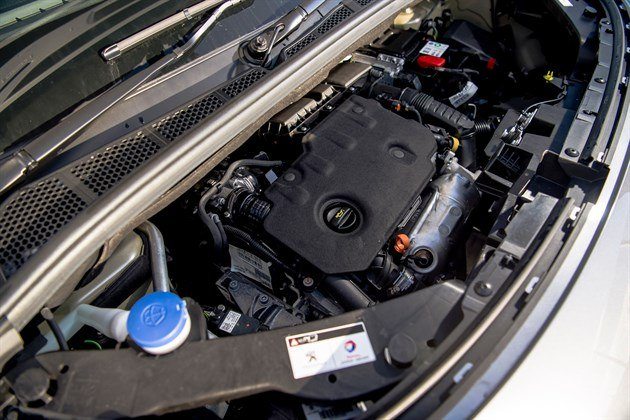
MagicWash wipers mean you won't have to open the bonnet as regularly.
A downside of this is that the Rifter requires special wipers. Our local Peugeot dealer quoted us £39 for a pair of fitted wipers for the Rifter. Not an insignicant amount, but bear in mind that 'normal' wipers can cost upwards of £30 on the high street without fitting.
All Rifters come equipped with the clever wipers as part of the standard-fit visibility pack, which also includes automatic lights, an auto-dimming rear-view mirror and 'follow me home' headlights - all genuinely useful features. If they were fitted to a Skoda, they'd probably be dubbed 'simply clever'.
My car's also fitted with the £100 family pack, which includes an extra little mirror below the rear-view mirror, as well as blinds on the rear side windows. As I don't have a family I probably wouldn't have chosen this option myself, but I can understand why parents would see £100 a small price to pay to keep an eye on their offspring.
All these minor details add up to make a car that's extremely well suited to family life. There's a lot to like about the Rifter, and I don't just mean the fancy windscreen wipers.
Where are all the cup holders?
You'd think that the Peugeot Rifter would be a very practical family car. Not if you like coffee...
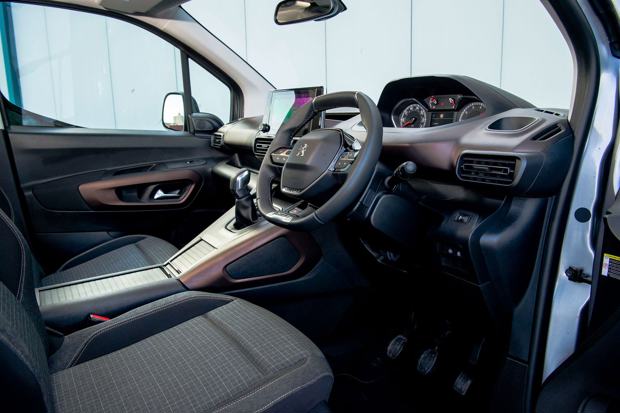
Date: 13 May 2019 | Current mileage: 3111 miles | Claimed fuel economy: tbc | Actual fuel economy: 48.7mpg
Practicality is high on the wish list of anyone considering a van-based people carrier like the Peugeot Rifter. And - apart from not being long enough for a Billy Bookcase - the standard Rifter is indeed a very practical choice. It's got a huge boot (especially when you drop the rear seats - an easy process), and enough headroom for the tallest of adults.
There's also various useful storage compartments dotted around the cabin. On our GT Line model, even the roof gets some useful stowage.
But it's not as well thought through as it seems. Especially if you're a coffee drinker.
There are just the two cup holders situated up front - both of them on top of the dashboard. They're both far away and too small, not to mention in the perfect position for being nicely heated in the sun on a hot day (fine for coffee, not so good if a cold can of pop is you beverage of choice).
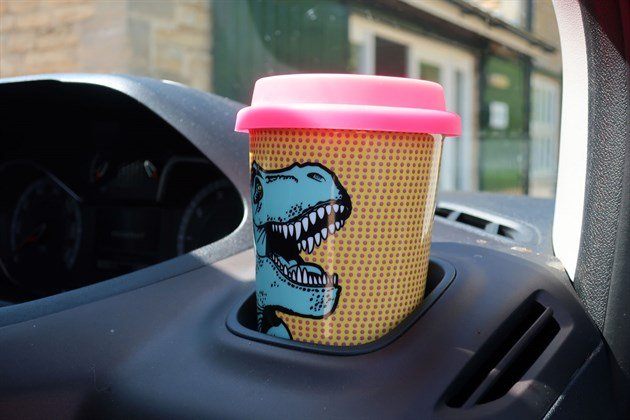
I tend to carry a fairly big bottle of water, and the only place for this is in the huge central storage bin between the front seats. On the face of it, this is a useful bit of storage - but it's far too easy to lose stuff. I've only had the car a few months and I'd hate to think what's been lost for good down there - imagine what it'd be like after years of family life.
The sliding doors mean there aren't any door bins in the rear, while those in the front are too narrow for anything of significance. Typically, for right-hand-drive versions of French cars, the glove box is also on the small side.
There seems to be a lot of space lost under the seats, too. Sure... things will probably slide there anyway, but I reckon Peugeot's missed an opportunity to include some hidden plastic drawers on the floor.
It's not all bad. There are some useful spots to store your sunglasses.
The Peugeot Rifter is very slow
It's almost as slow as a Nissan Serena diesel. And that's saying something.
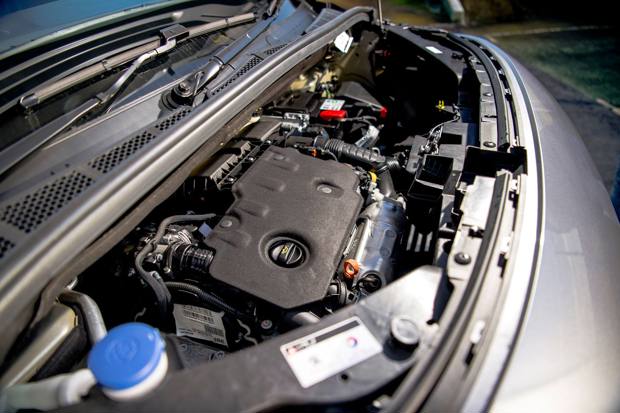
Date: 27 May 2019 | Current mileage: 3912 miles | Claimed fuel economy: 46.1 - 51.6mpg | Actual fuel economy: 47.1mpg
Apparently, you can buy a Peugeot Rifter with a 75PS version of the 1.5-litre diesel engine. This surprises me as my Rifter is the 100PS model, and it feels like it could be outdragged by a milk float.
I know you don't buy a car like this to travel quickly. But there's a nasty T-junction onto a major road near our office, and you need a very big gap in the traffic in the Rifter to pull out without upsetting a lorry driver.
Joining the motorway requires a lengthy sliproad, or you'll find yourself praying for helpful motorists happy to move over and create a gap for you. I suspect the 130 model would be much more relaxing to drive.
Peugeot hasn't released 0-62mph acceleration figures for the diesel Rifters, but going by the Berlingo (which is basically the same car), the 110 will take 12.3 seconds to reach 62mph. The 75 takes 16.5 seconds. That almost puts it in the same league as a 1990s' Nissan Serena diesel.
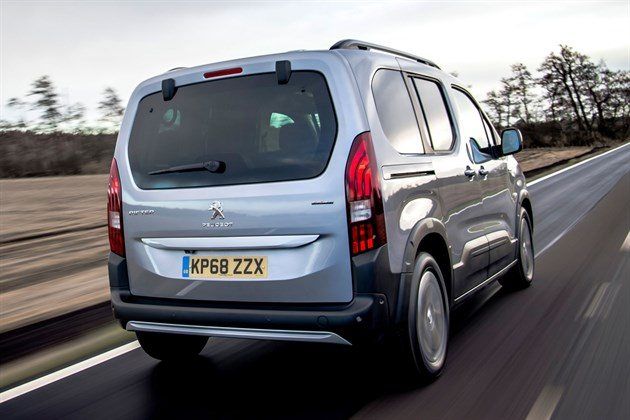
The 130 engine also comes with the luxury of being available with a six-speed manual gearbox or eight-speed automatic gearbox. The latter is the dream, but I suspect even the six-speed manual will be an improvement over the five-speed gearbox used in my Rifter.
There are nicer gearboxes to use, but that's not my beef. It's functional, but in desperate need of a sixth gear for motorway cruising. By the time you get up to speed on the motorway, it's running at higher-than-necessary revs, which isn't great for refinement or fuel economy.
Having said that, fuel economy has been averaging late 40s mpg. We've been driving it gently (it's the only way...), but it compares favourably against its official 46.1 - 51.6mpg combined figures.
So, to sum up: the diesel Rifter is very slow but also surprisingly efficient, despite being in desperate need of a six-speed gearbox. If you can afford it, stretch to the BlueHDi 130 diesel engine.
Why the Rifter offers tremendous value for money
Andrew drives the Peugeot 508 SW and thinks it emphasises how good value for money the Rifter is...
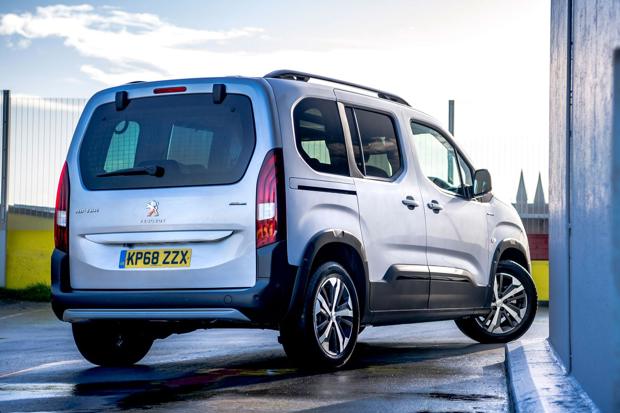
Date: 10 June 2019 | Current mileage: 4389 miles | Claimed fuel economy: 46.1 - 51.6mpg | Actual fuel economy: 46.3mpg
I recently drove the Peugeot 508 SW. While it's not a car that will be seen in the corporate world as a direct rival for my Rifter, it's not inconceivable that a real-world buyer might visit a Peugeot dealer and consider them both as their next family car.
Both are very practical cars with generous luggage capacities. The Rifter trumps the 508 in terms of outright space, obviously (it's based on a van...), but the 508's boot is bigger than many estates of its size. I also suspect the 508 SW would do a better job of transporting a Billy bookcase.
Both share an engine. You can spec both the Peugeot 508 SW and the Rifter with a 1.5-litre diesel engine producing 130PS. It's a strong engine in both cars, and arguably the pick of the range, although my Rifter manages with just 100PS (see my last update...).
Both cars even have their share of irritating foibles. I've previously written about the irritations I've had with the Rifter, but the 508 SW isn't free of flaws, either. It shares an infotainment system with the Rifter, which is clunky, and I once spent a week with a 508 Fastback without getting Android Auto to work at all.
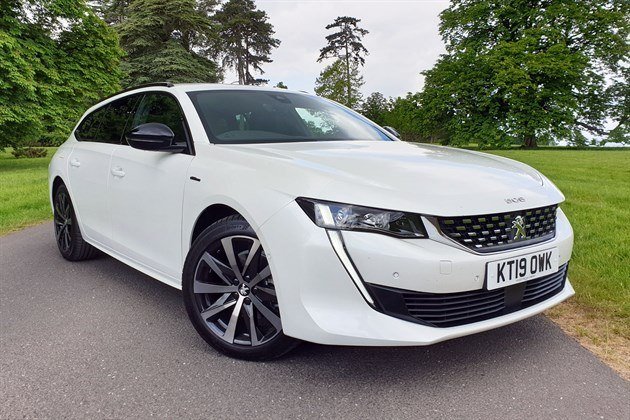
You might expect, then, that the two Peugeots would be fairly closely priced. Wrong.
The Peugeot Rifter starts at £20,245 - while mine, with its mid-range diesel engine and numerous options, costs £25,135. I don't think it's possible to spend £30,000 on a Rifter, which seems incredible when you look at the prices people are willing to pay for desirable SUVs.
The cheapest 508 SW on sale is a hefty £26,845. Top-spec models are more than £40,000. Yup...
While I don't think the 508 SW is too expensive (you'll have to read our review to find out why), it does cement how good value the Rifter is. It's an awful lot of physical car for the money.
Faulty sensor sidelines the Rifter
Our Rifter heads to A&E after dodgy sensor causes a broken door.
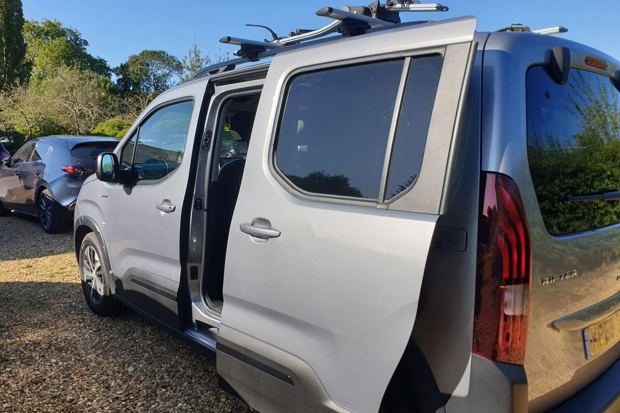
Date: 2 October 2019 | Current mileage: 5333 miles | Claimed fuel economy: 46.1 - 51.6mpg | Actual fuel economy: 46.3mpg
The funniest thing happened the other day. I was filling up our long-term Peugeot Rifter with diesel and wondering what kind of mechanisms were in place to stop the sliding door going all the way back and hitting the filler cap when it was open. It was probably a sensor, I reasoned. Something simple that would keep the sliding door locked shut if the filler cap wasn’t properly closed. Little did I know I’d soon get the opportunity to find out exactly how it all worked.
Tank full, I went to pick up the kids up from school only to find that the near-side rear sliding door would open a few inches, but wouldn’t roll all the way back. Odd, I thought. The next day, the sliding doors functioned normally. But then it happened intermittently a few more times. Puzzled, I wondered if something was jamming the door slide. There was no warning or error messages displayed, and the door would open and start to roll back but then stopped, like it was caught on something. The next time it happened, things didn’t go well as the door handle sheered off and the panel flexed, leaving a rather sizeable dent.
So I got in touch with our local Peugeot dealer – Marshalls of St Neots. I was told that if I wanted a courtesy car, it was a two-week wait, but if I didn’t, then they were able to look at our broken Rifter at the end of the week. And so began a period of time that saw us parted from our long-termer for nearly six weeks.
After a week, I was told the car wasn’t ready because the dealer had ordered the wrong door handle for the car (and this was only realised after they’d painted it and were about to fit it). Then, of course, they needed to fit a new locking sensor because otherwise the door would keep jamming and the handle would break, again. But after two weeks, the car was ready. Sort of...
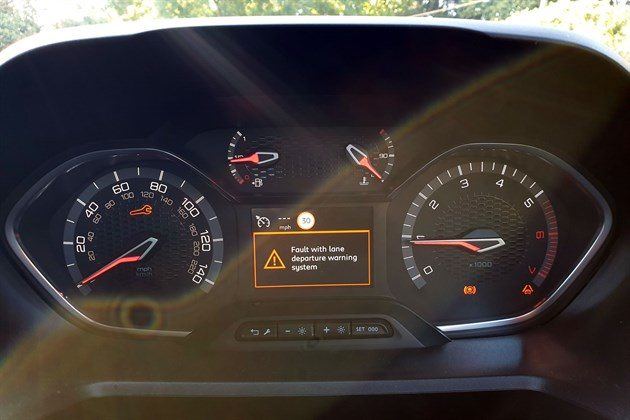
Ever since we’ve had the Rifter, it’s been flashing up various fault and sensor warnings related to the radar-operated cruise control. We’ve generally not bothered to get this looked at but – as the car was going to the dealer’s anyway – we asked them to rectify the fault. So, two weeks later, and with the door fixed, the technicians now turned their attention to this issue.
Marshalls service desk rang us to tell us there was indeed a fault with the camera and that they needed a replacement part, which was due to arrive in a day or so. After two weeks, we inquired what the delay was only to be told the part had to come direct from Peugeot in France. France is very clearly a long way away because after four weeks the part still hadn’t arrived. So, six weeks after we first dropped it off, we gave up and arranged to collect the car the following Saturday afternoon. The service desk assured us they would call us as soon as the part arrived.
When we arrived to collect the car, the less than charming salesman told us we weren’t expected and made quite the song and dance about having to call the service manager to get the keys for the vehicle. We were reminded at great length that this was a problem we had caused and that he was clearly doing us a massive favour. Thankfully, the service manager was much less overbearing and apologised unreservedly for the problems and the confusion over collection.
Annoyingly though, we’re left with a car that still has a dent down the side and warnings flashing up about failed sensors. It’s a shame, because time and time again the Rifter has proved itself an excellent family wagon. It might not be pretty or refined, but it is hugely practical and fun tool around in. But it’s been let down by build quality issues... and we’re still waiting to hear about that replacement part.
Keith Moody
